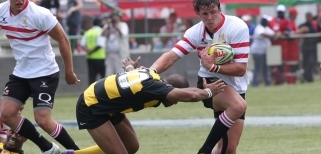




Health Information



Preventing Rugby Injuries and Common Treatment Methods

Preventing Rugby Injuries and Common Treatment Methods (by Sportsperformance Physiotherapy)
Rugby is an intense and physically demanding sport that requires careful preparation and precautions. We aims to provide valuable insights and practical tips on preventing rugby injuries and ensuring a safe and enjoyable experience during the event. Sportsperformance physiotherapy’s physiotherapists provide regular on-field cover for HK Scottish Rugby Football Club and Kowloon RFC during the rugby season, like Hong Kong Sevens.
Preventing Rugby Injuries Guide
1. Understanding Common Rugby Injuries: Before delving into injury prevention strategies, knowing the types of injuries commonly associated with rugby is crucial. These may include sprains, strains, fractures, concussions, dislocations, and overuse injuries. By understanding these risks, players can take proactive measures to minimize their occurrence.
2. Warm-up and Stretching: A proper warm-up routine is essential to prepare the body for the physical demands of rugby. Dynamic exercises, such as jogging, high knees, and lateral lunges, help to increase blood flow, raise body temperature, and loosen up muscles. Additionally, incorporating stretching exercises that target major muscle groups can enhance flexibility and reduce the risk of muscle strains.
3. Strength and Conditioning: Incorporate resistance training exercises that target the muscles used in rugby, such as the legs, core, and upper body. Focus on exercises like squats, lunges, deadlifts, push-ups, and rows. A well-rounded strength and conditioning program will improve overall performance and reduce the likelihood of injuries.
4. Proper Technique and Tackling: Coaches and players should prioritize teaching and practising correct tackling techniques. This will ensure that players maintain good body positions, use their shoulders rather than the head, and wrap their arms securely around the opponent. This will reduce the risk of head and neck injuries and promote safe play.
5. Protective Gear and Equipment: Wearing appropriate protective gear can significantly reduce the risk of injuries. Players should ensure they have well-fitted mouthguards to protect their teeth and jaws and quality headgear to minimize the risk of concussions. Additionally, players should ensure their boots have proper ankle support and wear suitable clothing to prevent cuts, abrasions, and friction burns.
6. Hydration and Nutrition: Players should maintain adequate hydration before, during, and after matches. Consuming a balanced diet rich in carbohydrates, proteins, and essential vitamins and minerals will aid in muscle recovery and reduce the risk of fatigue-related injuries.
7. Rest and Recovery: Adequate sleep, regular rest days, and listening to your body's signals are vital for injury prevention. Proper recovery strategies, such as stretching, foam rolling, and massage, can help alleviate muscle soreness and promote overall well-being.
In rugby matches, players may suffer from various types of injuries. Recovery and rehabilitation in rugby are challenging journeys that require the collective efforts of players, physiotherapists, and other professionals. The role of physiotherapists in the recovery process is critical. Injured players can safely return to the field and continue to enjoy their beloved sport through appropriate treatment methods, personalised rehabilitation plans, and psychological support.
Recovery and Rehabilitation in Rugby
1. Common Treatment Methods: During the recovery process, physiotherapists select appropriate treatment methods based on the characteristics and severity of the injuries. These methods may include:
- Massage therapy promotes blood circulation and reduces pain and inflammation through massaging muscles and tissues.
- Exercise therapy: Involving specific exercises and activities to aid in regaining strength, flexibility, and coordination.
- Muscle strengthening: Enhancing the strength and stability of injured muscles through resistance training and functional exercises.
- Balance and coordination training Assists in restoring movement control and balance ability, reducing the risk of re-injury.
- Vision exercises: Specific eye movement exercises can help restore visual function and balance perception for head injuries like concussions.
2. Gradual Rehabilitation Plan: The recovery process is gradual and progressive. Physiotherapists develop personalized rehabilitation plans based on the severity of the injury and individual recovery needs. This plan may include different treatment stages and progressive exercises and activities. Players need to follow the therapist's guidance, gradually increasing the intensity and range of activities to ensure a safe and effective recovery.
3. Psychological Support and Preventive Measures: Psychological support and preventive measures are also crucial during the recovery process. After an injury, players may experience emotional distress, anxiety, and stress. Collaborating with psychologists and receiving necessary support and counselling can help players cope positively and maintain good mental well-being. Additionally, preventive measures such as wearing appropriate protective gear, adequate warm-ups and rest, and adherence to game rules can reduce the risk of injuries.



